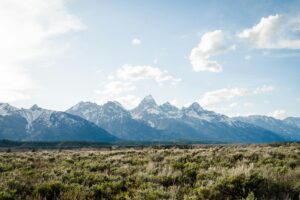How Did the Tetons Get Their Name?

It’s time to address the elephant in the room. Does “Teton” really mean "breast" in French? Is that what it was really named for? It’s past time to address these questions.
The Truth
Téton (with the accent) does in fact mean something like “breast” or “small breast” or “nipple”, depending on the translation from French to English.
Origin
It isn’t documented who exactly named this area, but we do know it was French-Canadian trappers or fur traders, such as those from the North West Company or Hudson Bay Company. Coming from Eastern Canada, they may have used the Missouri River, then the Platte, North Platte, and finally the Sweetwater River into western Wyoming.
It is apparent that at least one of these trapper-traders thought the Teton Range (or perhaps just the main peaks) looked like breasts or nipples, but honestly, who knows what they were thinking at the time?
But wait, there’s more
The Tetons aren’t the only range named after anatomical structures in French—across the valley is the Gros Ventre (pronounced in Wyoming “groh-VAHNT”) Range. “Gros ventre” means “big belly” in French. Perhaps it was the same trapper-trader who named both. Interestingly, the famous “Sleeping Indian” rock structure on Sheep Mountain in the Gros Ventre Range either looks like a Native chieftain with his arms crossed, or... has a big belly. Again, it’s impossible to know what the explorers were thinking 200 years ago, but we could be on to something.
Growing up, Dillon could see the Grand Teton from his house on a clear day. His family took him to nearby national parks so often that he took the parks for granted. It took the rigors of life to teach him how good he had it, and he now spends as much time in the mountains as possible.
Photo by Jonah Brown on Unsplash

